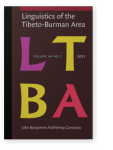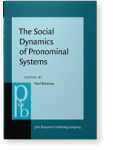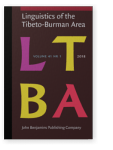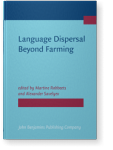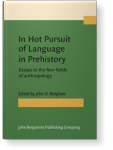George L. van Driem
List of John Benjamins publications for which George L. van Driem plays a role.
2019 Chapter 7. The dynamics of Nepali pronominal distinctions in familiar, casual and formal relationships The Social Dynamics of Pronominal Systems: A comparative approach, Bouissac, Paul (ed.), pp. 151–203 | Chapter
Nepali uses various morphological means formally to distinguish at least five levels of deference in verbal interaction. In addition to the three Nepali second person pronouns, for each of which the Nepali verb distinguishes separate conjugated forms, Nepali speakers also make use of the… read more
2018 Linguistic history and historical linguistics Linguistics of the Tibeto-Burman Area 41:1, pp. 106–127 | Article
This invited response to a piece by LaPolla, published in issue 39/2 of LTBA, addresses both LaPolla’s misrepresentations of the history of linguistics and his flawed understanding of historical linguistics. The history of linguistic thought with regard to the Tibeto-Burman or Trans-Himalayan… read more
2017 Chapter 8. The domestications and the domesticators of Asian rice Language Dispersal Beyond Farming, Robbeets, Martine and Alexander Savelyev (eds.), pp. 183–214 | Chapter
Rice genetics has now provided molecular evidence for three distinct domestications of Asian rice, giving rise to ahu, indica and japonica rice and subsequently involving the multidirectional introgression of favoured alleles between these three families of Oryza sativa cultivars. The… read more
2013 Biactantial agreement in the Gongduk transitive verb in the broader Tibeto-Burman context Functional-Historical Approaches to Explanation: In honor of Scott DeLancey, Thornes, Tim, Erik Andvik, Gwendolyn Hyslop and Joana Jansen (eds.), pp. 69–82 | Article
The Gongduk language is spoken in an enclave in south central Bhutan comprising several villages and hamlets in the mountains west of the Kurichu. The language occupies a distinct phylogenetic position within the Tibeto-Burman language family. The intransitive verb agrees for person and number with… read more
2009 Genetic and linguistic borders in the Himalayan Region Becoming Eloquent: Advances in the emergence of language, human cognition, and modern cultures, d'Errico, Francesco and Jean-Marie Hombert (eds.), pp. 181–202 | Article
There are a number of competing theories about the origins of the Himalayan peoples. These theories are largely based on linguistic and/or archaeological findings, sometimes supported by the results of small-scale genetic studies. A large-scale, ethnolinguistically-informed genetic study of the… read more
2008 The origin of language: Symbiosism and symbiomism In Hot Pursuit of Language in Prehistory: Essays in the four fields of anthropology, Bengtson, John D. (ed.), pp. 381–400 | Article
Symbiosism is a Darwinian model of language and its emergence. Symbiotic Theory operates on the Leiden definition of memes as isofunctional neuroanatomical entities corresponding to linguistic signs in the Saussurean sense, not on the Oxonian conception of memes as units of imitation. Symbiosism… read more
2005
Keith W. Slater. A Grammar of Mangghuer: A Mongolic Language of China’s Qinghai-Gansu Sprachbund
Studies in Language 29:2, pp. 547–549 | Miscellaneous